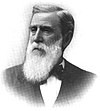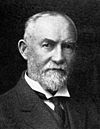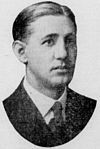It has been requested that the title of this article be changed to List of governors of Oregon . Please see the relevant discussion on the discussion page. The page should not be moved unless the discussion is closed; summarizing the consensus achieved in support of the move. |
This article lists the individuals who have served as Governor of Oregon from the establishment of the Provisional Government between 1841 and 1843 to the present day.

The Governor of Oregon is the head of the executive branch of Oregon's state government and serves as the commander-in-chief of the state's military forces. The title of governor was also applied to the office of Oregon's chief executive during the provisional and U.S. territorial governments.






























































